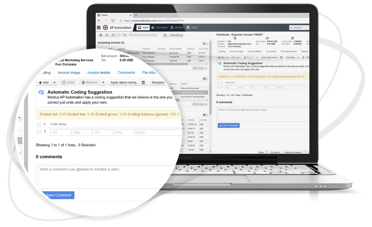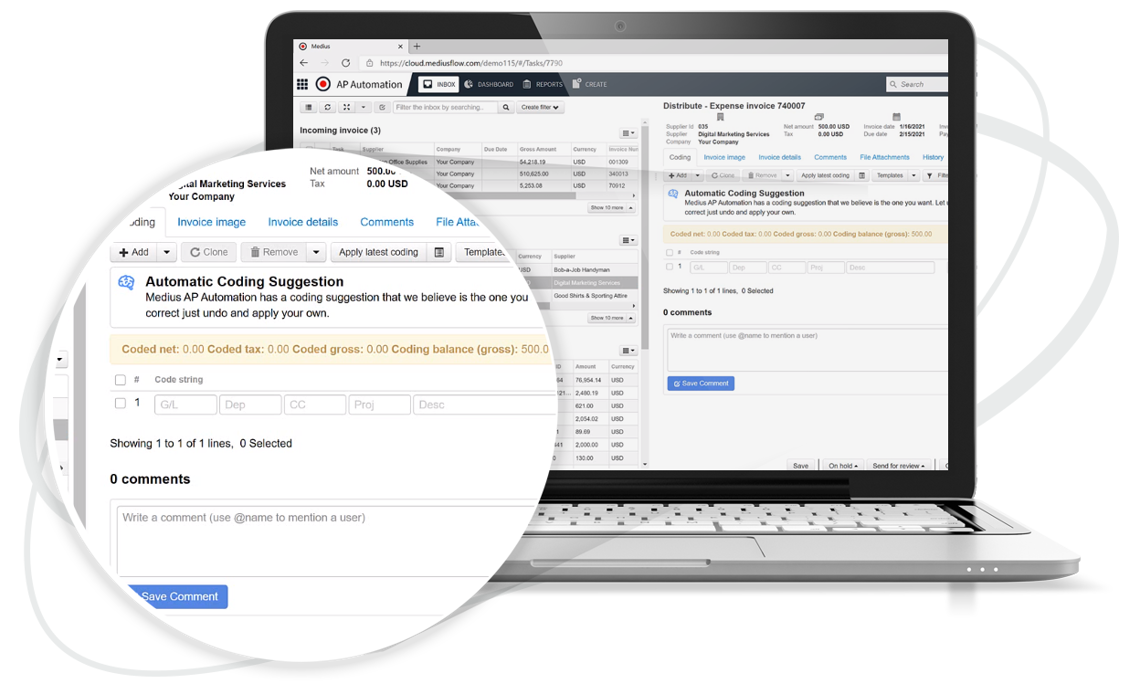When tariffs shift, CFOs must lead the alignment
How to bring finance, procurement, and IT together
Tariffs are a key focus in every quarterly forecast. Whether it’s a new import tax, a policy change, or the gradual impact of new regulations, CFOs need to navigate these shifts with clarity and control—even when things feel uncertain.
But here’s the challenge: tariffs aren’t just a finance problem. Their impact cascades across procurement, supply chain, compliance, and technology. To respond with speed (not panic), CFOs must bring finance, procurement, and IT into tighter alignment, making it easier to adapt strategy, shift spend, and keep operations fluid.
Tariff policy has become unpredictable, with rules changing almost daily. It’s no longer enough to make decisions based on last quarter’s logic. CFOs must be proactive, adaptable, and deeply connected across departments.
Here’s how to make that happen.

Sync data across teams to uncover the true cost
Tariffs rarely show up neatly on supplier invoices. They're often handled by customs brokers, buried in landed costs, or hidden in freight charges. That means procurement might not see them. Finance can’t model them. And IT may not even have a way to track them.
What to do:
-
Use analytics to understand total landed cost, including tariffs, duties, and transport.
-
Combine customs data, supplier locations, and landed costs into real-time dashboards for better transparency and accurate forecasting on costs, inventory, and tax planning.
-
Give procurement access to real-time cost data to support smarter sourcing decisions.
As supply chains shift, expect to see more third-party risks. Incorporate vendor onboarding due diligence into your workflows to avoid compliance issues or fraud.

Expand scenario planning beyond finance
What happens if a new tariff is imposed on goods from Southeast Asia? What if HTS (Harmonized Tariff Schedule) codes shift? What if a supplier passes through increased costs next quarter?
Those aren’t just finance questions. They impact procurement strategies, tech readiness, and supplier relationships.
How to align:
-
Loop procurement into financial planning cycles to model sourcing shifts.
-
Involve IT in scenario planning to prepare systems for changes in supplier networks or cost structures.
-
Adopt continuous risk monitoring tools—including AI-driven analytics—to simulate “what-if” scenarios and develop dynamic responses to tariff disruptions.
-
Track leading indicators like cost impact, margin erosion, and working capital shifts to trigger timely action.
Without real-time insights, businesses are flying blind. This is why many CFOs are turning to AI-backed technology, including invoice automation, that can analyze and flag anomalies and changes in real-time.
How can AP help mitigate costs in turbulent trade times?

Rethink procurement as a strategic lever
Procurement is more than just managing spend—it’s central to risk mitigation. With tariff volatility in play, sourcing teams can be the first line of defense.
Encourage your teams to:
-
Identify high-risk suppliers in regions that are most affected by tariff fluctuations.
-
Explore alternative vendors in lower-tariff countries.
-
Negotiate with suppliers to share or absorb cost increases.
-
Evaluate HTS code classifications for potential savings.
-
Work together on strategies like storing goods in advance to avoid potential tariffs or rerouting them through countries where you can recover tariffs.
Strategic sourcing isn’t a one-time event. It’s a continuous process that must align with finance’s goals and IT’s capabilities.
How CFOs can leverage AP to combat tariffs & inflation


Use IT to build a more flexible finance function
Tariff volatility is a systems problem as much as a finance one. Legacy ERP tools often fall short in surfacing tariff-related costs or modeling new scenarios. That’s where IT can help..Tariff volatility is a systems problem as much as a finance one. Legacy ERP tools often fall short in surfacing tariff-related costs or modeling new scenarios. That’s where IT can help.
Focus IT investments on:
-
Procurement and sourcing platforms that allow rapid supplier re-evaluation.
-
Expense management systems that help offset increased costs in other areas, such as travel and entertainment (T&E).
-
Integration platforms that connect finance and operations data in real time.
-
Automation and continuous accounting tools that instantly capture the financial impact of every transaction, which is essential for staying on top of tariff impacts across global operations.
Don’t just track invoices. Model landed cost, customs duties, and potential currency fluctuations to understand the full picture.

Take a methodical approach to transformation
You don’t need to reinvent the wheel overnight. But you do need a clear roadmap.
Start with:
-
Define your supplier network
Map your current vendors and regions to get a baseline.
-
Assess tariff exposure
Understand which products or countries are most at risk.
-
Explore mitigations
This might include reclassifying HTS codes, adjusting sourcing, or shifting freight terms.
-
Model payment strategies
Factor in landed cost, not just invoice due dates. Re-evaluate payment terms and timing to support cash flow under new cost structures.
Keep track of tax positions and any transfer pricing risks tied to tariffs. As regulations change, having this documentation can help lower audit risks and make disclosures easier.
Turn invoice data into strategic intelligence with Medius
Tariffs may be out of your control, but how you respond to them isn’t. CFOs who drive alignment between finance, procurement, and IT create the collaboration needed to weather volatility and come out ahead.
You need easy access to your invoice data to stay on top of changing costs. Unlike systems that struggle with indirect tariff costs, Medius lets you use your AP data to get ahead in today’s shifting economy.
Medius automatically captures every invoice detail and learns from your historical purchasing patterns, so your finance team can quickly spot at-risk suppliers and predict the financial impact of tariffs. This insight helps you stay proactive, protecting your bottom line instead of reacting to economic uncertainty.
So when everyone is talking about uncertainty, you have something to count on.
Get in touch with our team, and we’ll show you how to use autonomous spend management automation to strengthen your tariff response.









